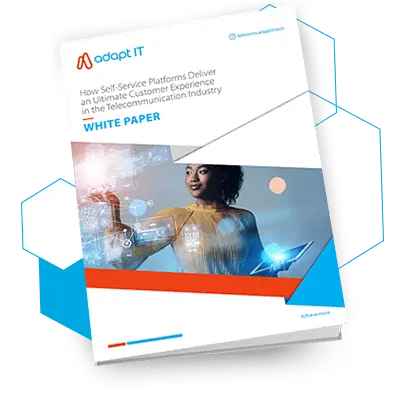ARPU, should be a top priority as today’s clogged telecom marketplace is packed with companies jostling in fierce competition for a slice of the profit pie.
Table of Contents
ToggleHaving enjoyed a blistering decade in the first part of the 21st century, they now have to face the inevitable market saturation stage.
Revenue and cash flows have taken a hit, declining by an average 6% between 2010 and 2017. The proliferation of Mobile Network Operators (MNOs) and Mobile Virtual Network Operators (MVNOs) has actually accelerated the congestion, leaving service providers grinding it out for the largest market share.
The African market is arguably one of the most hit with over 100 MNOs slugging it out.
Heavy investment in wireless networks became the next viable option as an increase in the number of consumers with wireless gadgets caused a mobile data boom. Predictably, aside from the high capital spending-to-revenue ratio, an important metric, the average revenue per user (ARPU) accrued to industry players, has taken a nosedive.
In Nigeria, MTN has seen its ARPU drop from $22 (in 2005) to $4.14 in Q1 2018. Sadly, over-the-top (OTT) players like Facebook and Google are entering into the fray at full scale, and it will require some inventiveness to keep ahead of the competition.
Advances in data analytics have however shifted the battle frontiers. Business Intelligence (BI) is proving to be the new recipe for success. To loosen the squeeze on margins and create more value, companies have to employ a strategy of data collection and analysis that delivers enterprise-wide solutions to understanding consumer needs and meeting them adequately.
- Competition from new entrants: Fierce competition exudes from the ever-increasing proliferation of MNOs and MVNOs forcing operators to reduce tariffs drastically, and subsequently dipping ARPU.
- Innovative offerings from new and existing competitors: New operators, MVNOs especially, are not burdened by legacy and backwards-compatibility issues, enabling them to offer value-added services that lure away consumers. Other MNOs employ the same tactic hoping to stifle out the competition and cash in on huge turnovers from an expanded customer base.
- Excellent quality of service (QoS) among peers: Network providers compete in delivering excellent QoS to existing subscribers in order to enhance customer satisfaction and guarantee customer loyalty.
- Economical network-growth plan: As much as the need to deliver optimal QoS, there is also the need for a cost-effective outline for network expansion. A large share of capital expenditure is usually spent on this without corresponding revenues. MNOs now sell off their infrastructure and lease them back to ensure profitability. Airtel Africa is a prime example.
Adapt IT to the rescue
Fortunately, end to end BI offers solutions to telecom companies who are navigating the web of network and subscriber data in order to arrive at informed decisions.
That’s why Adapt IT Telecom’s End to End BI solutions have gained traction across the continent (and beyond), extracting intelligence out of businesses’ data to drive more competitive offerings and improve profit margins.
ARPU analysis forms a core of our analytics solution which is done by:
- Delivering daily ARPU and average Spend Per User (ASPU) trends.
- Providing a consolidated view of customers’ key indicators and drivers.
- Tracking monthly targets on a daily basis.
- Supporting critical subscriber profitability monitoring per usage.
- Enabling service innovation by providing executive decision support metrics that connect to operation intelligence metrics.
With this solution, operators get the benefit of building their network according to their growth potential, appropriate billing reflective of relevant metrics and at affordable pricing.
We provide a wide range of BI analytics packages to meet the specific needs of telecom providers and at whatever growth stage they are in. We also take it one step ahead by providing custom (personalised) solutions for a better user experience.
Network data analysis
- Proactive monitoring by generating data pertaining to the health of the network which helps companies undertake a root-cause analysis of outages and proactively prevent future ones.
- Capacity planning by ensuring steady scaling of network capacity relative to expected market growth. This is done in order to prevent large-scale unutilised capacity that is not immediately monetizable.
Subscriber data analysis
- Subscriber profiling by scouring data about subscribers based on their usage of your services. This includes but is not limited to call patterns, demographics such as age and gender, and call data record based information, giving you an advantage in segment targeted marketing.
- Churn tracking by identifying subscriber decline and its drivers per segment, and per geographic location. Competition causes increased subscriber churn rates since they have multiple options of telecom providers to select from, a phenomenon further exacerbated by mobile number portability. Insights into your own organisation’s churn metrics (and also that of your competitors) is important, so as to incentivize likely-to-churn subscribers with effective retention strategies.
The focus of BI is developing into predictive modelling where strategic choices are informed by data.
Consequently, investments in the BI/analytics domain spiral by the day to develop innovative solutions that aid customer satisfaction and retention, optimisation of capital expenditure, and targeted marketing that help improve operator’s ARPU.
The only thing that stops most telecoms from pushing their businesses over the proverbial mountain, is lack of story-telling data that equips companies with the knowledge needed to gain the edge. Adapt IT Telecom offers concrete data solutions to aid their clients in innovative marketing and CX.
Explore the Power of CDR

Steven Sutherland experienced Adapt IT Divisional Executive, dynamic business leader for their Telecoms Division with a demonstrated 25-year history in the telecommunications and IoT sectors. Strong global marketing, sales, and business development professional with 15 plus years focused experience in the Southern and Rest-of-Africa markets and a unique blend of entrepreneurial spirit combined with a passion for both technology and business.
At Adapt IT Steven is responsible for building and growing the Telecoms Division on top of its industry-proven software competencies including but not limited to Customer Experience and Self Service, NextGen VAS, IoT, FINTECH, and Advanced Analytics. Steven is always looking forward to an opportunity to demonstrate the value that his 20 plus years of experience in these disciplines can bring to your business







